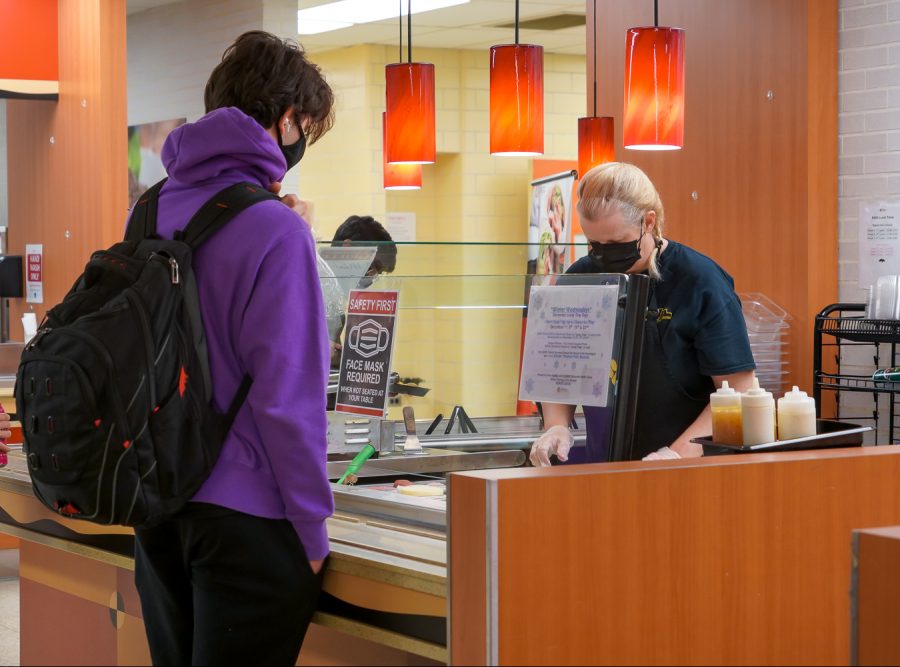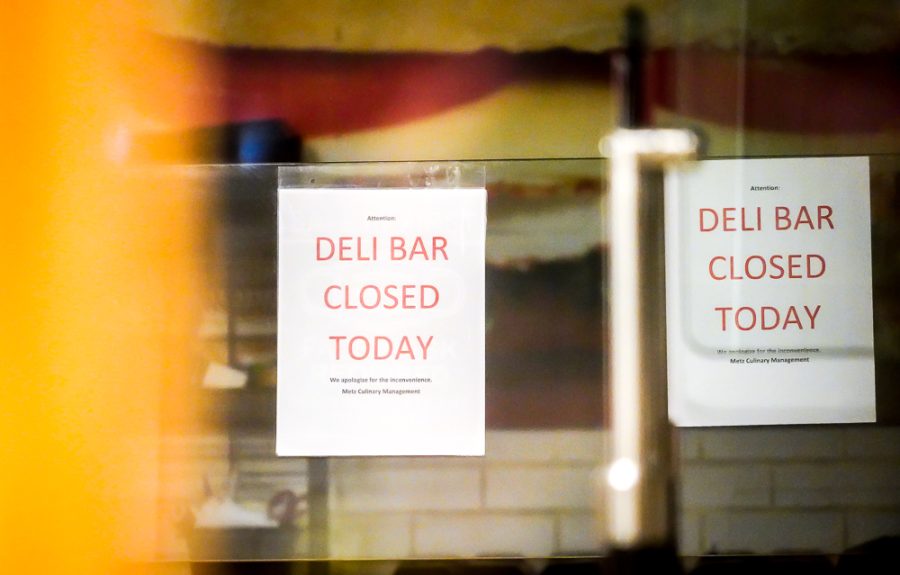District food service endures supply chain issues
Management has tried to limit visible effects of the nationwide supply chain shortage in the cafeteria.
Some cafeteria options such as the deli bar have been limited or temporarily unavailable because of delivery problems.
January 12, 2022
Styrofoam trays, pizza crusts, and peanut butter and jelly are just a few of the things on NASH cafeteria manager Jay West’s wanted list.
As North Allegheny’s Dining Services Director during a nationwide supply chain crisis, West sees daily challenges in organizing the food supply at the district’s twelve cafeterias. The issue goes beyond simply finding enough supplies – it also involves coordinating their transportation to NA.
“The difficulty of finding delivery drivers and reliable vendors has been a nationwide issue,” West said.
As economic recovery continues during the COVID-19 pandemic, food suppliers have struggled with increased demand for goods, which in most cases has returned to pre-pandemic levels. While demand has risen, suppliers have struggled to catch up, as the pandemic labor shortage has seen a greater need for qualified workers to coordinate the distribution of goods.
The imbalance between supply and demand is at the root of the problems currently faced by food distributors across the globe, including Metz Culinary Management, operator of North Allegheny food service.
Even so, West stated that Metz has been able to limit the effects of supply chain problems that are visible to students.
“There are significant supply chain issues behind the scenes, but to the eyes of the customers, it’s been seamless,” West explained.

With the extension of free breakfast and lunch by the National School Lunch Program, more students have been taking advantage of the opportunity to eat both breakfast and lunch at school. According to District Manager at Metz Culinary Management Larry Stelitano, “Lunch participation has been up almost 22% from 2019,” meaning that, on average, 1600 additional lunches are being served daily among the district’s 12 buildings.
Like West, Stelitano affirmed that supply chain problems have mostly been unnoticeable to students.
“North Allegheny has been impacted by the nationwide supply chain crisis, but students will likely not realize it on a day-to-day basis,” he said.
While lunches have grown, the increase in breakfast customers has been even more significant. Stelitano stated that “breakfast participation is up 244% from 2019” at NA, yet he added that to provide for this greater demand, Metz has looked to a variety of distributors for adequate breakfast supplies.
Specifically, Jay West mentioned that the recent strike of the Kellogg Company has made cereal an especially valuable commodity. However, with the end of the three-month strike at Kellogg’s, pre-packaged cereal is likely to become more widely available again.
The nationwide shortage of plastic materials is a clear result of an affected supply chain. Stelitano said that “takeout containers, styrofoam trays, and Saran Wrap” have been especially hard to acquire, leading to a change in the type of containers used for fruit and vegetables.
According to a print report from the Cleveland Research Institute provided by Metz, costs for school food service have increased by 10% in 2021, with the highest growth coming from disposable plastic products and protein sources. The difficulty of obtaining meat and cheese has even caused a week-long closure of the cafeteria deli bar.
The type of lunch supplies in greatest demand has changed from month to month. For instance, West said that “in October, there was a shortage of pizza dough,” reflecting a national trend. Currently, the item needed most is pre-packaged peanut butter and jelly sandwiches. Typically a cafeteria staple, PB&J sandwiches are especially needed for the elementary schools, where they are “one of the most popular items,” according to Stelitano.

“Metz is always going to have the concept of what will be served, but sometimes, the exact product shown on the menu may be unavailable,” Stelitano explained.
The cafeteria staff has realized that versatility is key in handling difficult situations. For example, a streamlined weekly menu has helped to plan out menus resourcefully. By having main lunch items repeat on a weekly basis, Metz Culinary hopes to limit the visible effects of the supply chain shortage to its customers.
Compared to years past, some students may be disappointed by the simplified menu, but most realize that integration is necessary given limited supplies.
“It’s impossible right now to plan detailed menus out in advance because delivery of the product may simply not be available, no matter what you pay for it,” Stelitano confirmed.
Despite supply chain shortages, Metz Culinary Management has worked hard to fulfill its goal of providing quality food to the district’s students and staff; in fact, according to Stelitano, Metz has never been anywhere close to not having enough supplies to serve all students. Some things may change in the cafeteria from day to day, but food service management voices a desire to constantly meet the needs of North Allegheny students, even in an exceptional time.













